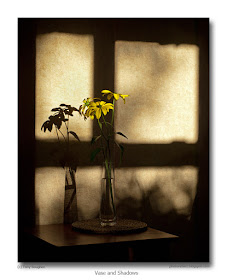click photo to enlarge
Autumn, the time of year when the leaves change colour and fall from the trees, the temperature drops and winter coats make an appearance, fieldfares and redwings appear in the hedgerows, the grass is laden with dew and worm casts each morning, and the unsuspecting householder finds a DIY project materialising through the slowly clearing mist!We've just embarked on the redecoration of our bedroom, so instead of getting out and about with my new camera I've been wielding a brush and scraper and hanging wall-paper. It's at times like this that I'm glad I have a garden because it means that photography doesn't have to come to a complete halt. During our exertions we've been watching the leaves on a couple of the cherry trees as they've changed colour and started to fall. After lunch today I decided to take a short break, got out our tallest pair of step-ladders and climbed up them with my camera to capture a few shots of the reds and yellows of the leaves before a strong wind blows the rest away.
The great temptation with a subject such as this is to take a shot of the whole of the leaf canopy because that's what impresses the eye so much. But this doesn't always work too well as a photograph. So I went for a closeup of a few leaves, using a shallow depth of field to give an out of focus background - a quick, simple and much easier way to produce a reasonable image - or so I think; you might disagree.
photograph and text (c) T. Boughen
Camera: Canon
Mode: Aperture Priority
Focal Length: 80mm
F No: f4
Shutter Speed: 1/320
ISO: 320
Exposure Compensation: 0 EV
Image Stabilisation: On






























